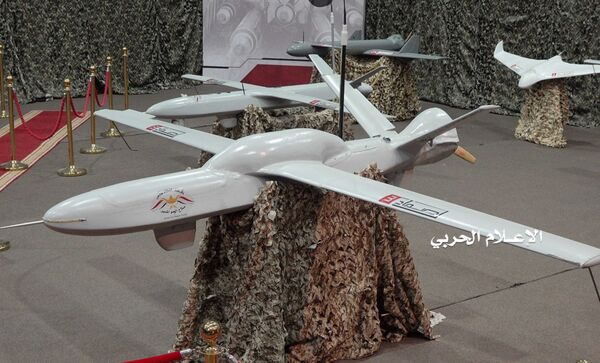
A Samad-3 UAV with its additional fuel tank mounted over its wing box is seen in a 7 July 2019 Houthi display. (Ansar Allah)
Israeli Air Force (IAF) personnel failed to correctly classify the unmanned aerial vehicle (UAV) that killed a civilian in Tel Aviv on 19 June, an IAF official told journalists in a 22 July briefing on the investigation into the incident.
Launched from Yemen by the Iranian-backed group Ansar Allah (commonly known as the Houthis), the UAV approached Tel Aviv from the Mediterranean and hit an apartment building close to the US consulate.
While Ansar Allah claimed the UAV was a new, radar-evading type called the Yafa (the Arabic name for the Jaffa part of Tel Aviv), the Israeli military identified it as an extended-range version of an Iranian type that the group calls the Samad-3.
The IAF official said the UAV had “a longer range than we expected, was identified by our system, and was misclassified or classified as a non-threat target by a human error”. He explained that the IAF does not rely on an automatic target-classification system, with its operators instead interpreting radar data to discount things such as non-hostile aircraft, birds, or clouds.
In this case, the UAV was detected a few minutes before it reached Tel Aviv as it approached from the west as another threat that was successfully intercepted approached from the east at about the same time, the official said.
Although the UAV's westerly approach may have contributed to it being incorrectly classified, as this is the direction used by most civilian aircraft heading towards Israel, he noted that it was flying at a low altitude, unlike airliners, and that the IAF had anticipated that attacks could come from this direction.
Looking to read the full article?
Gain unlimited access to Janes news and more...







